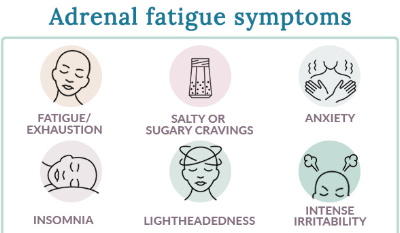In a media landscape saturated with superheroes who seem invincible, Rita Farr stands apart. Known as Elasti-Woman on HBO Max’s Doom Patrol, Rita is not your typical comic book character. While she possesses powers, her story is deeply entwined with themes of vulnerability, identity crisis, and the lasting physical and emotional toll of trauma. For many living with chronic illness, Rita Farr’s journey offers a powerful reflection of their own struggles and resilience. Her character goes beyond entertainment and becomes a rare beacon of validation for an often-overlooked community.
The Origin of Rita Farr: A Symbol of Invisible Pain
Rita Farr’s transformation into Elasti-Woman came after a freak accident left her physically unstable. She struggles to maintain a solid human form, often melting into an amorphous state, especially during moments of stress or insecurity. While her mutation gives her abilities, it also strips her of autonomy, control, and predictability—an experience that resonates deeply with people managing chronic illnesses.
This loss of physical stability parallels conditions like multiple sclerosis, lupus, or fibromyalgia, where the body no longer functions in expected ways. The frustration, fear, and shame that accompany her condition echo what many feel when their health changes seemingly overnight.
Representation Without Romanticization
Unlike many portrayals of chronic illness or disability in fiction, Rita’s story does not wrap itself in feel-good tropes or miraculous recoveries. Her journey is complex and ongoing. She isn’t shown as broken or a victim, but she’s also not miraculously “fixed” by her powers. This nuanced portrayal breaks away from narratives that either glorify suffering or erase it entirely.
The show allows her to be flawed, angry, proud, frightened, and brave—all within the same episode. This realism makes her more human, and for viewers with chronic conditions, it provides a rare sense of recognition. She is not defined solely by her abilities or limitations but by how she lives in spite of them.
Emotional Resilience as a Superpower
While other characters in Doom Patrol possess more visually impressive abilities, Rita’s emotional resilience is what makes her truly powerful. She continually pushes herself to take control of her body and her role within the team, even when things go wrong. Her persistent efforts to maintain structure in a chaotic world mirror the daily grind of managing medications, appointments, and flare-ups.
People living with chronic illness often develop an incredible emotional strength that’s rarely acknowledged. Rita brings that to the forefront, showing that heroism can exist in quiet determination, not just in explosive battles.
Challenging Beauty Standards and Aging
Rita’s backstory as a glamorous Hollywood actress from the 1950s adds another layer of complexity. Her former identity was tied to beauty and control, two things her condition forces her to confront. Her face may still appear unchanged, but internally, she’s battling instability and insecurity.
This challenges media’s narrow standards around beauty, youth, and perfection. Chronic illness often brings about physical changes—weight fluctuation, mobility issues, visible devices—that society teaches us to hide. Rita’s storyline peels back the mask, literally and metaphorically, pushing viewers to reconsider what strength and attractiveness truly look like.
The Power of Community in Healing
Rita finds a home in Doom Manor with others who also live with trauma and unique challenges. The found-family dynamic reflects the importance of community support, especially for those navigating illness. Friends and allies who understand without judgment can be life-saving.
In real life, people with chronic conditions often turn to online forums, advocacy groups, and peer networks to find the understanding they may lack in their day-to-day environment. Rita’s connection with the team illustrates the transformative power of belonging and mutual support.
A New Kind of Hero for a New Kind of Story
The chronic illness community is rarely acknowledged in superhero narratives. When it is, the depiction is often shallow or laced with pity. Rita Farr offers something different. She is a reminder that strength doesn’t always roar. Sometimes, it melts down, reforms, and stands up again the next day.
Her visibility in mainstream media matters. It tells those with invisible or fluctuating conditions that they are seen, that their experience is valid, and that they too can be the heroes of their own stories. Rita’s existence in this universe redefines what a hero can look like and what kind of strength deserves to be celebrated.
Frequently Asked Questions
Why is Rita Farr relatable to people with chronic illness?
Because her struggles with controlling her body and emotions mirror the unpredictable nature of chronic illnesses and the emotional toll they take.
Does Doom Patrol portray chronic illness intentionally through Rita?
While not labeled directly, her symptoms, emotional arc, and instability resonate powerfully with real-life chronic illness experiences.
How does Rita challenge traditional superhero narratives?
She is not perfect, invincible, or purely physical in her strength. Her emotional growth and perseverance offer a more realistic version of heroism.
What message does Rita send to those living with invisible illnesses?
That it’s okay to struggle, that you’re more than your condition, and that your daily fight deserves recognition.
How is Rita different from other disabled or ill characters on TV?
She is multi-dimensional, not defined by pity or tragedy. She evolves, learns, and leads without being cured or sidelined.
Is Rita’s story inspiring or just symbolic?
It’s both. Her character provides inspiration through her authenticity and offers symbolic hope for broader inclusion in media.
Rita Farr’s journey is not just about superpowers or science fiction. It’s a deeply human story that reflects the complexity of living with chronic illness. In portraying a hero who struggles, adapts, and keeps moving forward, Doom Patrol gives voice to millions who do the same every day—quietly, persistently, and with incredible strength.
For More Information Related to Fibromyalgia Visit below sites:
References:
Fibromyalgia Contact Us Directly
Click here to Contact us Directly on Inbox
Official Fibromyalgia Blogs
Click here to Get the latest Chronic illness Updates
Fibromyalgia Stores








